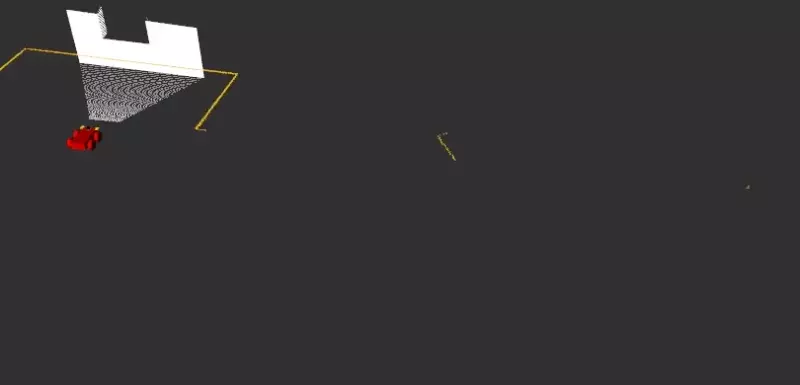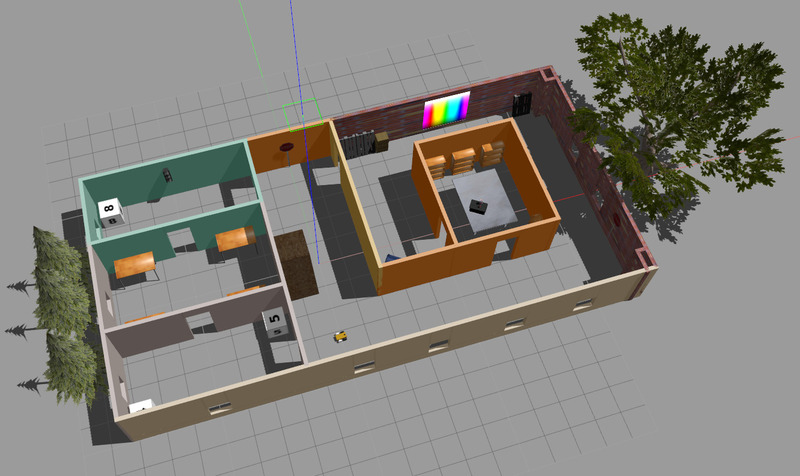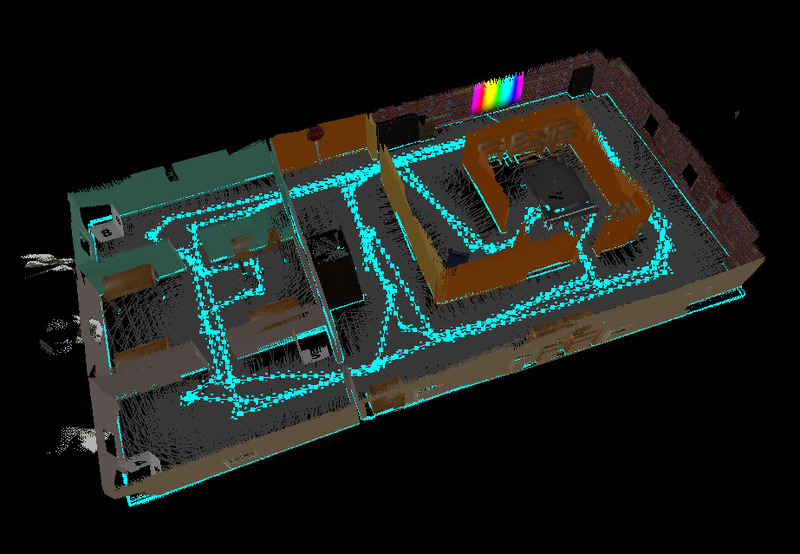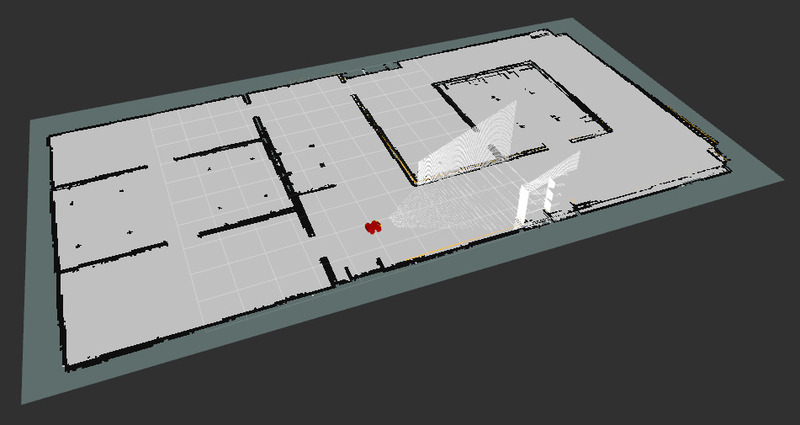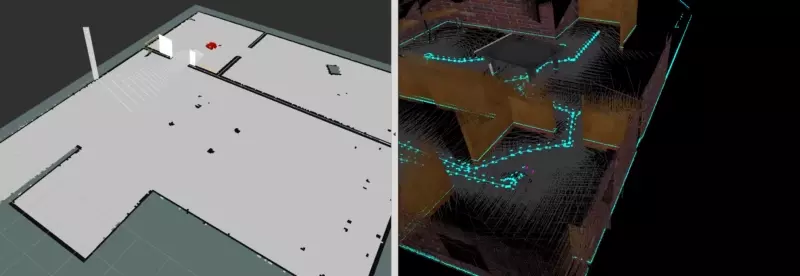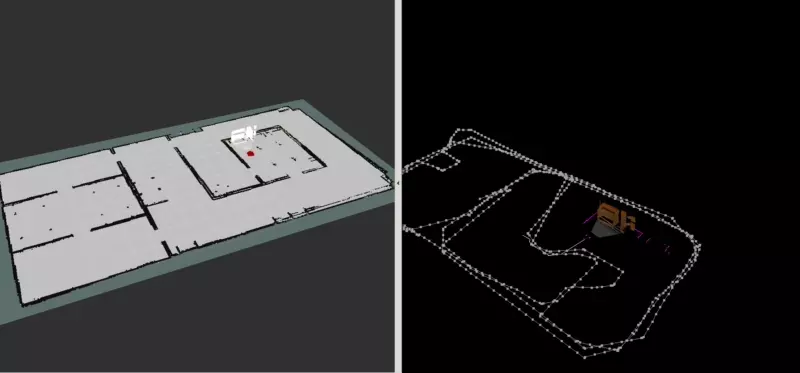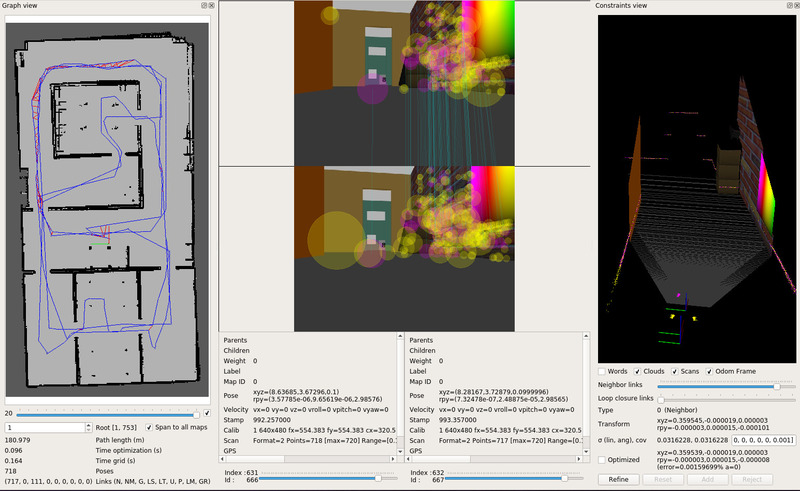This project is about performing SLAM using RGB-D based
Real-Time Appearance-Based Mapping via the RTAB-Map algorithm.
It utilizes ROS' rtabmap and
rtabmap_ros packages and
is developed against ROS Kinetic.
To build the project, you can try executing ./run-nvidia.sh to drop
into an X11 aware Docker container with NVIDIA GPU support.
The following three pictures show the simulation environment and SLAM results of the RTAB-Map node, as well as the map generated by it. For more information about RTAB-Map, see also the offical website.
The simulated environment:
Nodes of the graph generated by RTAB-Map (after 111 rounds of global loop closure):
The occupancy grid generated by RTAB-Map:
To run, execute:
roslaunch map_my_world world.launchWe can use keyboard teleop to control the bot manually:
rosrun teleop_twist_keyboard teleop_twist_keyboard.pyTo perform mapping (thereby deleting any already existing map) we can run
roslaunch map_my_world mapping.launchThis will create or overwrite the database file in ~/.ros/rtabmap.db.
If a map already exists, we can also choose to enter localization mode by running
roslaunch map_my_world localization.launchTo obtain an instance of the required rtabmap.db (usually in ~/.ros/rtabmap.db;
see the localization.launch file for different paths), see the 0.0.0 release.
This file was generated during the development of this project.
To inspect the created map, run
rtabmap-databaseViewer ~/.ros/rtabmap.db- RTAB-Map as an Open-Source Lidar and Visual SLAM Library for Large-Scale and Long-Term Online Operation (Mathieu Labbé, François Michaud; 2019)
Distributed as an open source library since 2013, RTAB-Map started as an appearance- based loop closure detection approach with memory management to deal with large-scale and long-term online operation. It then grew to implement Simultaneous Localization and Mapping (SLAM) on various robots and mobile platforms. As each application brings its own set of contraints on sensors, processing capabilities and locomotion, it raises the question of which SLAM approach is the most appropriate to use in terms of cost, accuracy, computation power and ease of integration. Since most of SLAM approaches are either visual or lidar-based, comparison is difficult. Therefore, we decided to extend RTAB-Map to support both visual and lidar SLAM, providing in one package a tool allowing users to implement and compare a variety of 3D and 2D solutions for a wide range of applications with different robots and sensors. This paper presents this extended version of RTAB-Map and its use in comparing, both quantitatively and qualitatively, a large selection of popular real-world datasets (e.g., KITTI, EuRoC, TUM RGB-D, MIT Stata Center on PR2 robot), outlining strengths and limitations of visual and lidar SLAM configurations from a practical perspective for autonomous navigation applications.
Note: This does not really work, as CLion will be unable to find generated headers. It's still a bit better than doing everything the hard way.
The full requirements for setting up CLion are given in the sunsided/robond-ros-docker repository. In short, run SSHD in Docker, configure a Remote Host build to connect to it, then configure the your build settings for ROS. For this repo and the included Dockerfile, this configuration will do:
CMake options:
-DCATKIN_DEVEL_PREFIX:PATH=/workspace/devel -DCMAKE_PREFIX_PATH=/workspace/devel;/opt/ros/kinetic;/opt/ros/kinetic/share
Environment:
ROS_ROOT=/opt/ros/kinetic/share/ros;ROS_PACKAGE_PATH=/workspace/src:/opt/ros/kinetic/share;ROS_MASTER_URI=http://localhost:11311;ROS_PYTHON_VERSION=2;ROS_VERSION=1;ROSLISP_PACKAGE_DIRECTORIES=/workspace/devel/share/common-lisp;ROS_DISTRO=kinetic;ROS_ETC_DIR=/opt/ros/kinetic/etc/ros;PYTHONPATH=/opt/ros/kinetic/lib/python2.7/dist-packages;PKG_CONFIG_PATH=/workspace/devel/lib/pkgconfig:/opt/ros/kinetic/lib/pkgconfig:/opt/ros/kinetic/lib/x86_64-linux-gnu/pkgconfig;LD_LIBRARY_PATH=/workspace/devel/lib:/opt/ros/kinetic/lib:/opt/ros/kinetic/lib/x86_64-linux-gnu:$LD_LIBRARY_PATH;PATH=/opt/ros/kinetic/bin:$PATH
